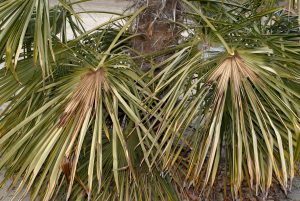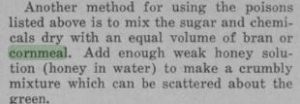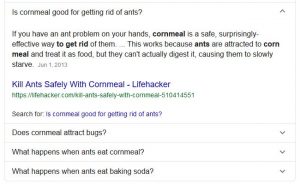Along with the trends of buying local food, buying organic, etc., there seems to be an increasing interest in the ultimate local food source – a garden. This includes in urban areas. Urban gardening is a great way to save money on food, a great source for fresh vegetables – especially in “food deserts”, and an easy way to introduce kids to where the food on their plate comes from. However, there are a couple potential obstacles you should consider first before starting your urban garden.

First, in urban environments the possibility that soil could have been contaminated with heavy metals, petrochemicals, etc. is pretty high, especially in older neighborhoods. Lead, which was once a common additive to gasoline and paint, is a common contaminant in urban soils. and can be absorbed by the roots of the vegetables you grow. Because of this, that lead can eventually end up in the food on your plate. Most lead poisoning comes from ingesting lead (like eating lead paint chips…), so it’s important to know that the soil you’re using for your garden is safe. You should take some soil samples and send them to a lab in your state that can test for heavy metals like lead. Usually the Land Grant university in your state (if you’re in the US) will have a soil testing lab where these tests can be performed for a nominal cost. Other forms of contamination are possible as well, such as chemicals from cars, asphalt , laundry-mats, etc. These chemicals are more difficult to test for, so your best bet is to find out the history of your garden plot. These records should be available from your local city government, perhaps even online. Read more about contamination in this post.
Second, urban soils are often compacted from foot, car, or perhaps machinery traffic. Compacted soils make it difficult for plants to grow, mainly because the plant roots are not strong enough to penetrate the compacted soil, and thus cannot gather enough water or nutrients for the plant to survive, let alone grow and produce vegetables. Compacted soils are especially common in newer housing developments where entire blocks of houses were built around the same time. The construction companies often remove all of the topsoil prior to building the houses. The soils are then driven over by construction machinery and compacted. Then sod is laid directly on top of the subsoil. This makes for soils with very poor growing conditions for both lawns and gardens.
A good alternative for areas with either contaminated or compacted soils is to use a raised garden bed with soil that was brought in from a reliable source. You can buy bags of potting soil from a local home and garden supply store, but a more economic alternative is to have a trailer full of topsoil trucked to your raised bed. When you build your raised garden, be sure to use untreated wood. Some of the chemicals used to for pressure treated lumber are designed to kill fungi that break down wood. These chemicals, some of which contain arsenic, can leach out of the wood and into the soil used for your veggies! However, untreated wood, though it might not last as long, will still last for decades and is probably cheaper anyway. There are lots of great designs and how-to sites that show you how to build a raised garden bed. Here’s an extension bulletin from Washington State University on raised bed gardening. The raised beds shown below are from when I first installed them in my community garden plot in Manhattan, Kansas. One is now a strawberry patch (the border helps contain the strawberries to a defined area), and the other is used for mostly cold season crops.

Space is also another consideration. If you don’t have the space for a garden or a raised garden, then perhaps you need to think outside the box (raised garden pun intended) and consider container gardening. Container gardening is exactly what its called – growing ornamental or vegetable plants in containers. Containers can be traditional plant pots, buckets, plastic totes, or any other container with an open top.
The advantages of container gardening include:
- Containers can be arranged to optimally use the space available, or rearranged if you like to mix things up sometimes
- Potting soil can be used, and can be trusted to be lead/chemical-free
- Work can be performed on a bench, thus avoiding working on your knees
- Containers can be arranged to provide decoration for your outdoor space
- Many objects found around the house can be cheaply converted into decent containers

Vertical gardening is a version of container gardening that uses your available space efficiently. Much like using shelves to save space inside your home, vertical gardens use shelves, stairs, racks, etc. to make use of vertical space. The options for vertical gardens are only limited by your imagination. Here are a few extension bulletins on vertical gardening from Tennessee State University and the University of Nebraska.
The main disadvantage of container gardening is that you’ll likely have to water more frequently, but there are strategies to overcome that problem – see my prior blog post about saving water with container gardening. Another good resource is the University of Illinois Container Successful Container Gardening website.
In summary, the biggest obstacles to urban gardening are soil contamination, soil compaction, and space limitations. I’ve given you a few good alternatives to overcome those issues. Also, be sure to fertilize appropriately, lime as needed, and make sure the plants that you pick are appropriate for the sunlight that’s available. Your local garden supply store or extension agent can help you with suggestions on those issues.
If you know of an urban gardening obstacle that I didn’t address, please leave a comment and I’ll see if I can help out.
Happy digging!
Colby
This was originally posted on Colby’s soil science blog, ColbyDigsSoil.com. Some edits, updates, and adaptions were made for this post.
















